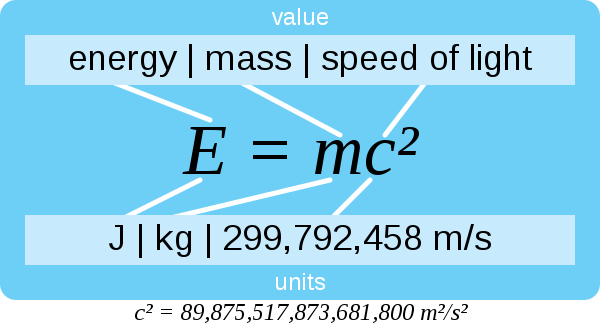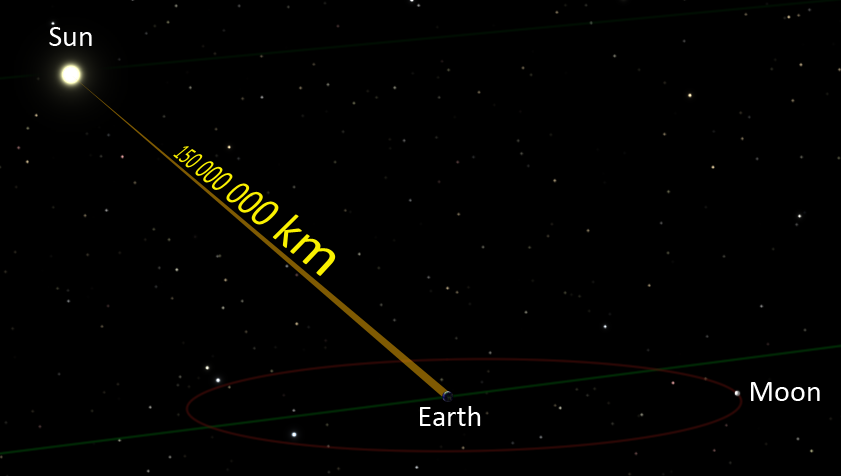{{appName}}
Hardy–Ramanujan number - positive cubes

- I (Prof. Hardy) remember once going to see him (Ramanujan) when he was lying ill at Putney. I had ridden in taxi-cab No. 1729, and remarked that the number seemed to be rather a dull one, and that I hoped it was not an unfavourable omen. "No", he replied, "it is a very interesting number; it is the smallest number expressible as the sum of two [positive] cubes in two different ways."
>>> 1**3 + 12**3 == 9**3 + 10**3 == 1729
True
E = m c2 - mass–energy equivalence - Albert Einstein
- Anything having mass has an equivalent amount of energy and vice versa. It is can be expressed in terms of speed-of-light.


E = m * c**2
# E : "units of energy" in Joules
# e : "units of mass" in kg
# c : "speed of light" ~= 3.00 * 10**8 m/s
# Sunlight takes about 8 min. 17 sec. ( 8*60 + 17) secs.
# to travel avg distance (km) from
# surface of Sun to Earth(15 * 10**7)
# 1 kg of mass can produce:
>>> E = m * c**2
9e+16 Joules of energy!
# 1 Joules per second = 0.001 kW
Theory of special relativity - Albert Einstein
- Laws of physics are the same for all non-accelerating observers
- Speed of light (c) in a vacuum is independent of the motion of all observers
- Space and time were interwoven into a single continuum known as space-time.
- Events that occur at the same time for one observer could occur at different times for another
- Massive objects cause a distortion in space-time, which is felt as gravity
- Two objects exert a force of attraction on one another known as gravity
Input-Output Economics - Wassily Leontif
 \[\begin{aligned}
X = inv(I - A) * D
\end{aligned} \]
\[\begin{aligned}
X = inv(I - A) * D
\end{aligned} \]
I : Identity Matrix A : The matrix of coefficients D : Final Demand X : Vector of total output

Solution: Input-output Model
import numpy as np
from numpy.linalg import inv
I = np.identity(3)
A = np.matrix ('0 .5 .3; .3 .1 .2; .4 .3 .3' )
# in thousands
D = np.matrix('20; 15; 18')
In [32]: I
array([[ 1., 0., 0.],
[ 0., 1., 0.],
[ 0., 0., 1.]])
In [33]: A
matrix([[ 0. , 0.5, 0.3],
[ 0.3, 0.1, 0.2],
[ 0.4, 0.3, 0.3]])
In [34]: D
matrix([[20],
[15],
[18]])
# in thousands
In [35]: inv(I-A)*D
matrix([[ 85.03448276],
[ 68. ],
[ 103.44827586]])